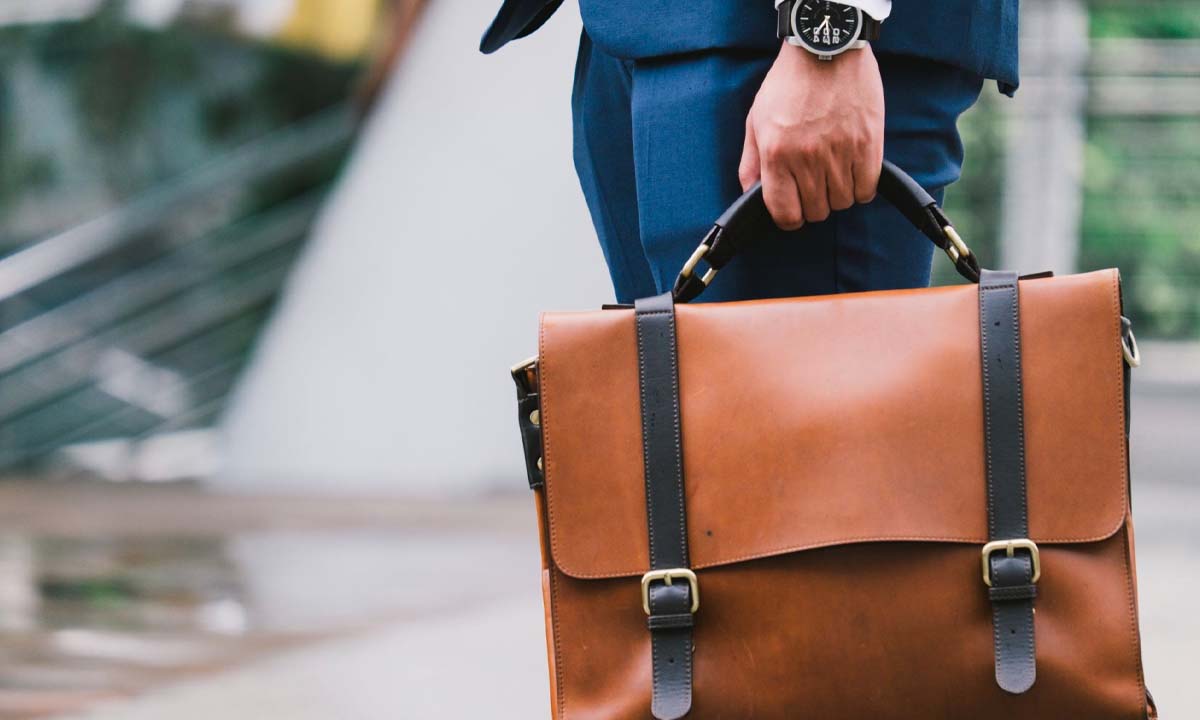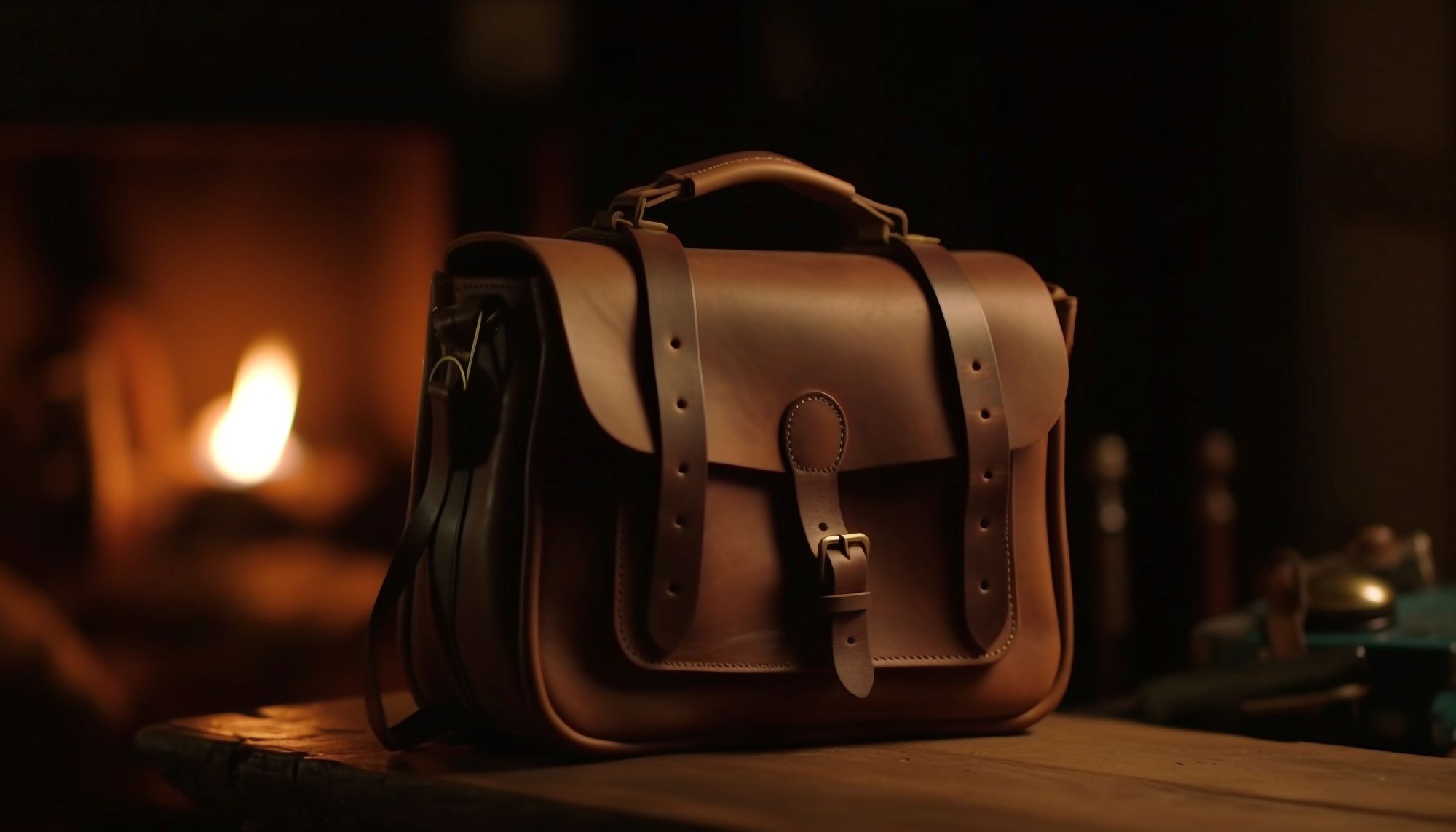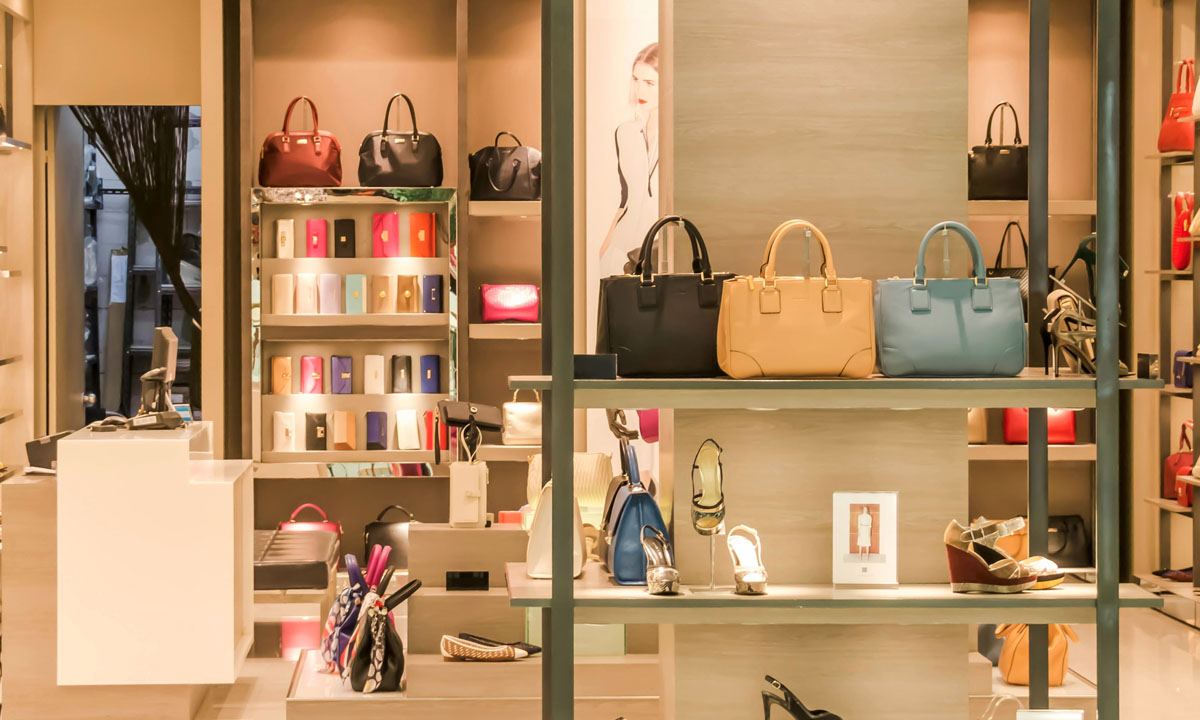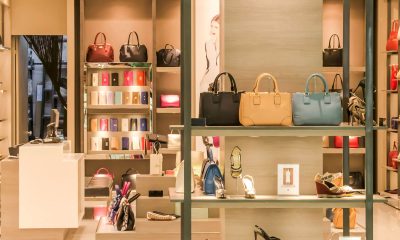LifeStyle
What Do Outstanding Luxury Briefcase Brands Have In Common?
Luxury is as much about the quality of construction as it is about the materials used.

When it comes to luxury accessories, particularly briefcases, discerning consumers often expect certain qualities and characteristics that set these products apart from their more average counterparts.
From superior craftsmanship to exceptional design, luxury briefcase brands represent the pinnacle of quality, elegance, and functionality. This article explores what makes these brands stand out, detailing the common traits that define them.
1. Quality Of Material
One of the defining attributes of luxury briefcase brands is the quality of materials they use. Premium full-grain or top-grain leather is typically the material of choice.
Full-grain leather is the highest quality leather available, including all the natural grain. Top-grain leather, on the other hand, is slightly thinner, but it retains a high level of quality and durability.
These luxurious materials lend a distinct feel and longevity to the briefcase, exuding elegance and class with each use. The texture, the smell, and the way the leather ages gracefully over time, adding to its charm and character, is a true hallmark of luxury.
Further complementing the leather are other elements, such as the hardware. Luxury brands often use premium metals like brass, titanium, or sometimes even gold for their locks, zippers, and buckles, providing a harmonious blend of durability and aesthetic appeal.
High-quality interior lining materials such as silk or suede are also common, adding a touch of luxury to every opening of the briefcase.
Now, a great example of a brand that promises and delivers good quality bags is Von Baer.
Von Baer
Von Baer are a luxury briefcase brand that sells exclusively handmade, full grain Italian leather briefcases.
No.1 from Von Baer
Their range includes more traditional briefcase styles (like the pictured No.1), as well as more modern and relaxed leather laptop bags. Their focus is on quality, and you will feel that once you open your bag. Find them at Vonbaer.com.
2. Craftsmanship
Luxury is as much about the quality of construction as it is about the materials used. The craftsmanship involved in creating a luxury briefcase is unparalleled, often involving significant handiwork and hours of meticulous labor.
Many luxury brands have a rich heritage and a long history of skilled artisans. These artisans, often trained through generations, possess a unique set of skills to craft these luxury products, reflecting a profound commitment to quality and detail.
Every stitch, cut, and seam is given careful attention. The stitching is often done by hand, with consistency and precision that machines can’t replicate. This level of craftsmanship ensures that the briefcase not only looks and feels luxurious but also holds up under the rigors of daily use.
3. Design
Design plays a critical role in the luxury briefcase realm. Luxury brands aim for designs that are classic, timeless, and elegant, with a subtle touch of modernity. A balance between aesthetics and functionality is key to creating pieces that are as practical as they are beautiful.

Attention to detail is paramount in luxury design. Everything from the placement of pockets and compartments to the choice of hardware is meticulously planned and executed. Luxury briefcase designs often transcend fleeting fashion trends, offering a unique blend of the old and the new that remains relevant and stylish throughout the years.
4. Brand Reputation
A strong brand reputation signifies reliability, quality, and prestige, often built over decades or even centuries of consistent performance and customer satisfaction. Luxury brands are associated with exclusivity, and owning a product from them often serves as a status symbol.
Luxury brands consistently deliver high-quality products that meet and often exceed customer expectations, thereby enhancing their brand value and customer loyalty.
5. Durability
Durability is an essential feature of luxury briefcases. Products from luxury brands are designed to withstand the test of time, often becoming heirlooms passed down through generations. The combination of top-notch materials and superior craftsmanship contributes to their longevity.
A luxury briefcase is an investment. Over the years, it develops a patina—a soft sheen that develops on the surface of the leather, adding to its allure. This patina, coupled with the robust construction of the briefcase, ensures that the product ages gracefully.
6. Price
Price is a defining characteristic of luxury briefcases. The use of premium materials, handcrafted details, personalized services, and the brand’s reputation all contribute to a higher price point. While these products are undoubtedly expensive, the price is often justified by the quality, durability, and prestige they offer.
High prices also often equate to exclusivity. signifying a certain level of success and refinement.
7. Innovation
Despite their often long and storied histories, luxury briefcase brands understand the need to innovate and adapt to changing consumer preferences and technological advancements.

This can include incorporating tech-friendly features such as laptop compartments, cable holes, or RFID protection. Some luxury brands have also embraced digital innovation, offering augmented reality experiences or online customization options.
8. Sustainability
As consumers become increasingly conscious of their environmental impact, luxury brands have begun to prioritize sustainability. This includes using responsibly sourced materials, reducing carbon emissions in production processes, and developing durable products that reduce the need for replacement.
While luxury brands must balance the demand for high-quality materials with sustainability, many are rising to the challenge. Initiatives include using vegetable-tanned leathers, ensuring ethical supply chains, and reducing waste in production processes.
The Takeaway
While luxury briefcase brands have uniquely different characteristics and selling points, they all share common features that define their status in the luxury market.
It’s the combination of quality materials, superior craftsmanship, timeless design, brand reputation, durability, premium pricing, innovation, and sustainability that truly sets these brands apart.
These shared qualities explain why luxury briefcases continue to be coveted items, not just as functional accessories but as symbols of status, refinement, and taste.
LifeStyle
Investing in Quality: The Benefits of Full-Grain Leather in Women’s Bags

If you are looking for the best type of leather for women handbags, full-grain is a top choice. It is rugged and chic — appealing to a discerning audience that knows good things come from an upfront investment. Sites like Longchamp.com are famous of their quality leather bags and amazing craftsmanship, showing the beauty of full-grain leather. Now, let us explore the benefits of using full-grain leather in women’s bags.
Unmatched Durability
Full-grain leather is justly recognized for remarkable longevity. While other materials might wear out, full-grain leather will develop a natural patina that makes it more beautiful over the years. Therefore, a bag made from this material can be used daily, and it will still maintain its overall shape for years to come. Made for women who are always on the go, a full-grain leather bag is a great and reliable companion that can sustain the hustle of everyday living while keeping its form.
Timeless Elegance
Each bag features a truly unique grain detail in the leather. Natural products cannot be replaced with a duplicate item, so they have an identity of their own. A full-grain leather bag is a classic beauty; its elegance transcends seasonal trends to always be in style, which makes it an essential accessory for any woman. Whether you are on the go in casual wear or dressing up for a large party, the full-grain leather bag adds natural elegance to your outfit.
Sustainable Choice
As a natural and renewable material that is longer lasting than other leathers, full grain leather has become more popular in today’s eco-aware world. It is a co-product of the meat industry, meaning that it uses a portion of the resources from animals that are already being used for food. Additionally, as full-grain leather has a long lifespan and does not need to be regularly re-purchased, it reduces the purchase of disposable fashion items that clog up landfills.
Greater Comfort and Functionality
Not only does a full-grain leather bag look great, but it also feels amazing. It shapes itself to your body the more you use it. Also, full-grain leather is water resistant, making it safer for your things during rainy days. Also, designers often combine this material with practical features like extra pockets, secure closures and adjustable straps to produce designs that are both stylish and functional.
A Smart Investment
Most of the people say that full-grain leather bags are expensive and they are not wrong. Full-grain will last you years (and in some cases decades to come), which ultimately saves money in the long run. And, if you do end up choosing to sell it later on down the road, a good leather bag will hold its resell value very well.
Where to Find Quality Leather Bags
If you would like to acquire a bag from top full-grain leather makers, there are several trustworthy retailers and brands with expertise in crafting quality genuine leather goods. Longchamp is a top example. This high-quality leather bag manufacturer is popular for its stunning French sophistication and superior quality. The excellent quality of the pieces they offers testifies to Longchamp’s craftsmanship, offering consumers stylish and reliable items.
Conclusion
Owning a full-grain leather bag is an investment that offers much more than just style. Ladies love it because it is durable, classic, friendly to environment, soft and comfortable. By selecting a long-lasting full-grain leather bag, you are not just adding a fashionable accessory but making an investment as well.
LifeStyle
Should I Break Up With My Partner Over Their Drinking?

Alcoholism is an increasingly prominent part of life at the moment, with more people finding themselves suffering or entering rehab than ever before.
The likes of NHS rehab clinics are being overun with patients, but it can be a long journey to even get to that point and many people don’t even realise they have a problem with drinking. Which is problematic not only for them, but partners too.
A partner’s drinking habits can have a huge impact on a relationship and in many cases, the other half will consider breaking up, running away, or sticking around and ensuring they take the right course of action.
There’s no right or wrong answer in such cases, and it is a personal decision that involves many different factors. If this is the situation you find yourself in, here’s what you should consider.
Recognising Problem Drinking
The first step is to recognise that your partner does have a problem with drinking in the first place and the effect it’s having on them. There are many warning signs that a partner is drinking too much, including…
- ● Frequent heavy drinking: If your partner often drinks to the point of drunkenness or relies on alcohol to get through daily activities, this could indicate a problem.
- ● Mood swings or aggression: Alcohol can cause changes in mood, and if your partner becomes irritable, angry, or aggressive when drinking, this is a red flag.
- ● Neglecting responsibilities: If your partner is frequently missing work, avoiding social obligations, or neglecting important tasks due to drinking, it’s a sign that alcohol is taking priority.
- ● Health issues: Physical signs such as frequent hangovers, weight gain, or health problems linked to alcohol consumption can signal problematic drinking.
- ● Denial or secrecy: If your partner hides their drinking, becomes defensive when asked about it, or denies how much they are consuming, this could suggest that they are aware of their problem but are unwilling or unable to address it.
Impact on the Relationship
If you’ve recognised that their drinking is becoming an issue, the next important step is to understand exactly how it’s affecting your relationship. Problem drinking can have a big impact on many different aspects of a relationship, often causing arguments and distress, as well as a number of other issues. You should think about…
- ● Emotional distance: Alcohol can create a barrier between you and your partner, leading to feelings of isolation or emotional neglect.
- ● Financial strain: Excessive drinking can result in financial problems, especially if your partner is spending large amounts of money on alcohol.
- ● Resentment: If you find yourself taking on more responsibilities or constantly covering for your partner’s behaviour, you may begin to feel resentful. Over time, this resentment can damage your relationship beyond repair.
- ● Lack of trust: Problem drinking can lead to broken promises, dishonesty, and secrecy, which can undermine the trust and security that are vital to a healthy relationship.
Communicating Your Concerns
If it is the case that your partner’s drinking is having a significant impact on your relationship, you should have a conversation with them and communicate your concerns. It’s a tricky conversation to have, but it’s so important to let them know how their drinking is affecting the relationship, as it’s likely they may not even be aware.
You should focus on how their behaviour makes you feel and the changes you see in them, as well as the relationship. Discuss your worries and the future of the relationship, while you should ensure that it is an open conversation with your partner able to express their feelings too. It may be that they are struggling to cope with certain stresses, anxieties or depression that is leading them to drinking in the first place, of which they may be cooperative in getting help.
Seeking Help
Help is an important port of call. If your partner is open to addressing their drinking then it may be that you want to remain in the relationship and support them. There are tons of resources available to help them, from going to rehab, speaking to doctors, seeing counsellors and attending support groups.
You can’t force your partner into change, it needs to come off their own back and they must be willing to take responsibility or it might be the time to exit the relationship.
Deciding Whether to Stay or Go
Ultimately, whether you stay in the relationship or not is a decision that only you can make. If your partner acknowledges their problem and is willing to seek help, it may be worth giving the relationship a chance. Recovery from alcohol addiction is possible, but it requires time, effort, and commitment from both partners.
However, if your partner refuses to address their drinking or if their behaviour continues to have a detrimental impact on your well-being, it may be time to consider ending the relationship. Staying in a relationship where addiction is present can be emotionally draining and harmful, and you must prioritise your own mental and emotional health.
LifeStyle
Styling a Lab Grown Diamond Tennis Necklace for Every Occasion

Every day, you wake up and rush out of bed to get ready for work. Be honest with us and tell us how much time you have to plan your wardrobe for the day, including matching accessories? And it becomes quite a task if you have to attend an additional event planned for the night.
Well, let us take a guess: 5 minutes maximum? We believe you need jewelry that will allow you to leave the house fast without having to worry about whether it suits your outfit. This is when the sheer allure of lab grown diamond jewelry enters the picture.
One such jewelry piece that truly stands out is the breathtaking beauty of lab grown diamond tennis necklaces. These ethical dazzlers are the perfect addition to your staple jewelry collection. A lab diamond tennis necklace is the perfect jewelry piece that would allow you to dress up or down, depending on the occasion.
With that being said, in this article, we will help you with some mind-blowing tips on how you can style one of these necklaces for day and night!
A Smooth Transition from Day to Night
To be honest, all of us at least once must’ve encountered one such occasion where we had to rush to an event right after work. We get how daunting it can be to carry an extra pair of clothes and jewelry. If you are someone who does this quite often, then we are here to save you from that. We suggest that you wear that little party dress to work, but don’t worry, you can layer it with a good formal blazer suitable for work.
This way, you can just ditch the blazer when you leave for the event, and as for the jewelry, we would recommend that you go with a classic pair of diamond stud earrings and pair them with your lab diamond tennis necklace, which is somewhere around 12 inches so that it rests on your collarbone, and add a sparkling solitaire to add the finishing touch to your ensemble. Wait, let’s not forget a good pair of nude pumps to complement your overall look.
Styling Necklaces for Different Occasions
When we shop for jewelry suitable for everyday and special occasions too, one such piece that is worth investing in is a solitaire necklace. These necklaces feature a single diamond in the center, which exudes both radiance and luxury at the same time. There are different styles that you can explore when shopping for these necklaces, but a single solitaire diamond and halo-style pendant necklace truly stands out.
It doesn’t matter if you are styling these for a formal setting like an office or a casual gathering like a brunch date with your friends. A solitaire pendant will complement the occasion and setting. But wait, before you invest in lab diamond jewelry, we encourage you to check out the 4 C’s of a diamond and whether the diamond is certified.
This will ensure that you are getting the best value for your budget. If you are confused about how to buy the best lab diamond necklace, you can book an online appointment with our experts at Friendly Diamonds. We are sure they will help you get the best diamond jewelry available that fits your budget and style. With that, we come to the end of this article. We hope you enjoyed these amazing styling tips.
Happy styling;)
-

 LifeStyle3 months ago
LifeStyle3 months ago10 Travel Safety Tips While Exploring the Glitz and Glamour of Famous Cities
-

 LifeStyle3 months ago
LifeStyle3 months agoWhat Are the Common Structures of Vendor Financing Deals?
-

 LifeStyle3 months ago
LifeStyle3 months agoStyling a Lab Grown Diamond Tennis Necklace for Every Occasion
-

 Popular2 months ago
Popular2 months agoWhat Is a Bitcoin ATM and How Does It Work?
-

 Popular2 months ago
Popular2 months agoHow to Bring Fresh Excitement into Your Relationship
-

 LifeStyle2 months ago
LifeStyle2 months agoShould I Break Up With My Partner Over Their Drinking?
-

 Popular2 months ago
Popular2 months agoDigital Dating Trends: What’s Hot in the World of Online Relationships?
-

 LifeStyle4 weeks ago
LifeStyle4 weeks agoInvesting in Quality: The Benefits of Full-Grain Leather in Women’s Bags
